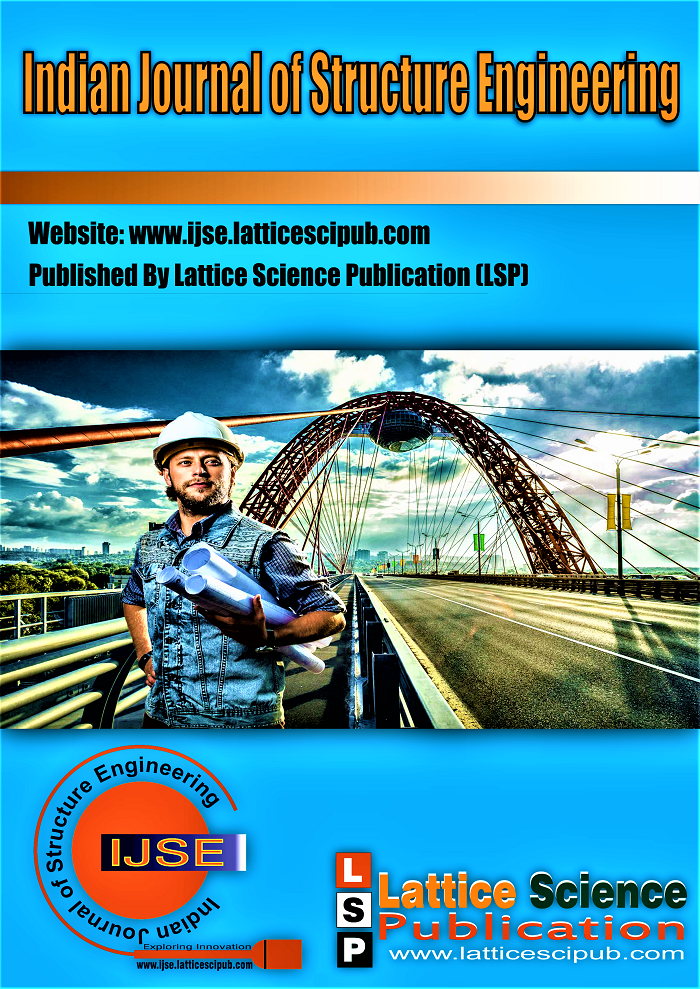Low Carbon Buildings for Sustainable Constructions
Main Article Content
Abstract
Greenhouse gases emissions are very important for every structure and environment. Greenhouse gases are increased now a days due to changes in climatic conditions by involving human activities in the last decades. In this main contributor is carbon content and carbon dioxide and methane in the environment. The main solution is to limit the changes in the climatic conditions. To reduce the use of carbon emissions in construction of Buildings and construction of Industrial structures. Structures which are made from timber and steel are produce less carbon and greenhouse gases compared to the concrete and steel structures. By using reused and recyclable materials we can reduce the carbon footprints and greenhouse gases as well as to develop low carbon materials. We need to design low carbon buildings to avoid climatic changes in the environment. Which will be give renewable performance. This paper gives a knowledge and help to reduction of carbon footprints on buildings. The main concept of this paper is reducing the emissions and reduce the carbon footprints and increase the life of the structure and to make the structure sustainable.
Downloads
Article Details

This work is licensed under a Creative Commons Attribution-NonCommercial-NoDerivatives 4.0 International License.
How to Cite
References
Carbon Trust, “Low Carbon Refurbishment of Buildings,” Manag.
Guid. CTV038, 2008.
L. F. Cabeza, C. Barreneche, L. Miró, J. M. Morera, E. Bartolí, and
A. Inés Fernández, “Low carbon and low embodied energy materials
in buildings: A review,” Renewable and Sustainable Energy Reviews.
[CrossRef]
Doddipati Srinath, Gomasa Ramesh, “Mechanical Properties of
Sustainable Concrete by using RHA and Hydrated Lime”,
International Journal for Modern Trends in Science and Technology,
Vol. 07, Issue 02, February 2021, pp.-83-86. [CrossRef]
B. V. Venkatarama Reddy, “Sustainable materials for low carbon
buildings,” Int. J. Low-Carbon Technol., 2009. [CrossRef]
Gopu Anil, Gomasa Ramesh and Dr. Annamalai Rangasamy Prakash,
“An Experimental Study Investigation on Self Compacting Concrete
and Strength Properties by using Fiber Reinforcement”, International
Journal for Modern Trends in Science and Technology, Vol. 07, Issue
, February 2021, pp.-93-96.
S. B. Riffat and G. Qiu, “A review of state-of-the-art aerogel
applications in buildings,” Int. J. Low-Carbon Technol., 2013.
N. Hirst, “Buildings and climate change,” in Design and Management
of Sustainable Built Environments, 2013. [CrossRef]
Bandi Pooja, Gomasa Ramesh and Dr. G. Dinesh Kumar,
“Experimental Study on Mechanical Properties of Geopolymer
Concrete by using Fly Ash and RHA”, International Journal for
Modern Trends in Science and Technology, Vol. 07, Issue 02,
February 2021, pp.-50-55.
A. Dodoo, L. Gustavsson, and R. Sathre, “Lifecycle carbon
implications of conventional and low-energy multi-storey timber
building systems,” Energy Build., 2014. [CrossRef]
Intergovernmental Panel on Climate Change and Intergovernmental
Panel on Climate Change, “Residential and commercial buildings,” in
Climate Change 2007, 2012. [CrossRef]
Palakurthi Manoj Kumar, Gomasa Ramesh and Dr. Annamalai
Rangasamy Prakash, “Evaluation of Different Tests and their
Comparisons by Combining Cement with Various Binders”,
International Journal for Modern Trends in Science and Technology,
Vol. 07, Issue 03, March 2021, pp.: 119-122.
S. H. Cho and C. U. Chae, “A study on life cycle CO2 emissions of
low-carbon building in South Korea,” Sustain., 2016.
Gomasa Ramesh, Doddipati Srinath, Mandala Sheshu Kumar;
"Earthquake Resistant of RCC Structures" Published in International
Journal of Trend in Scientific Research and Development (ijtsrd),
ISSN: 2456-6470, Volume-4,
Issue-5, August 2020,
pp.808-811.
A. Stafford, C. Gorse, and L. Shao, “The Retrofit Challenge:
Delivering Low Carbon Buildings,” Res. Insights into Build. Retrofit
UK, 2011.
Gomasa Ramesh, Doddipati Srinath, Mandala Sheshu Kumar,
“Importance of Dynamic Analysis for RCC Structures”, International
Journal for Modern Trends in Science and Technology, 6(8): 271-276,
[CrossRef]
G. Q. Chen et al., “Low-carbon building assessment and multi-scale
input-output analysis,” Commun. Nonlinear Sci. Numer. Simul., 2011.
T. Häkkinen, M. Kuittinen, A. Ruuska, and N. Jung, “Reducing
embodied carbon during the design process of buildings,” J. Build.
Eng., 2015. [CrossRef]
Bonagani Vamshi Krishna, Gomasa Ramesh and Dr. Annamalai
Rangasamy Prakash, “Effect of Geo-Activator on Strength and
Durability Properties of Geopolymer Concrete”, International Journal
for Modern Trends in Science and Technology, Vol. 07, Issue 03,
March 2021, pp.: 123-126.
C. Wilson, “Disruptive low-carbon innovations,” Energy Research
and Social Science. 2018. [CrossRef]
E. A. Mohareb and C. A. Kennedy, “Scenarios of technology
adoption towards low-carbon cities,” Energy Policy, 2014. [CrossRef]
Gomasa Ramesh, Dr. Annamalai Rangasamy Prakash, “Repair,
Rehabilitation and Retrofitting of Reinforced Concrete Structures”,
Special Issue 2021, International Journal of Engineering Research &
Technology (IJERT) ISSN: 2278-0181 Published by, www.ijert.org
NCACE - 2020 Conference Proceedings.
O. Guerra-Santin and C. A. Tweed, “In-use monitoring of buildings:
An overview of data collection methods,” Energy Build., 2015.
[CrossRef]
M. Fesanghary, S. Asadi, and Z. W. Geem, “Design of low-emission
and energy-efficient residential buildings using a multi-objective
optimization algorithm,” Build. Environ., 2012. [CrossRef]
Dharna Ramya, Gomasa Ramesh and Dr. Annamalai Rangasamy
Prakash, “Shear Behavior of Hybrid Fiber Reinforced Concrete”,
International Journal for Modern Trends in Science and Technology,
Vol. 07, Issue 02, February 2021, pp.-79-82.





